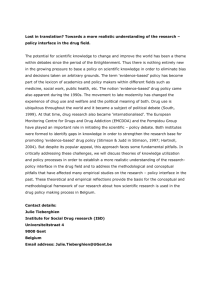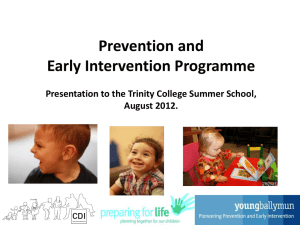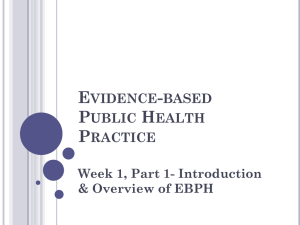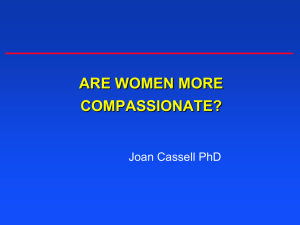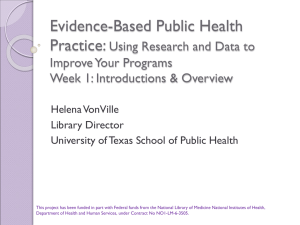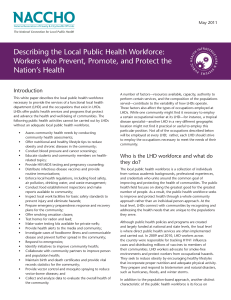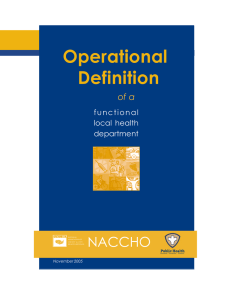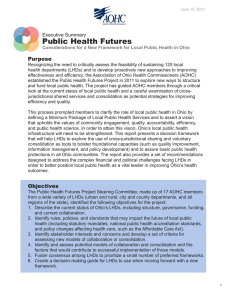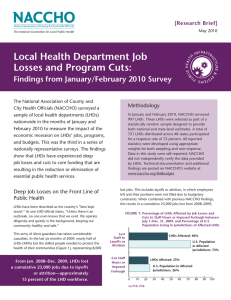naccho evidence-based action plan template
advertisement
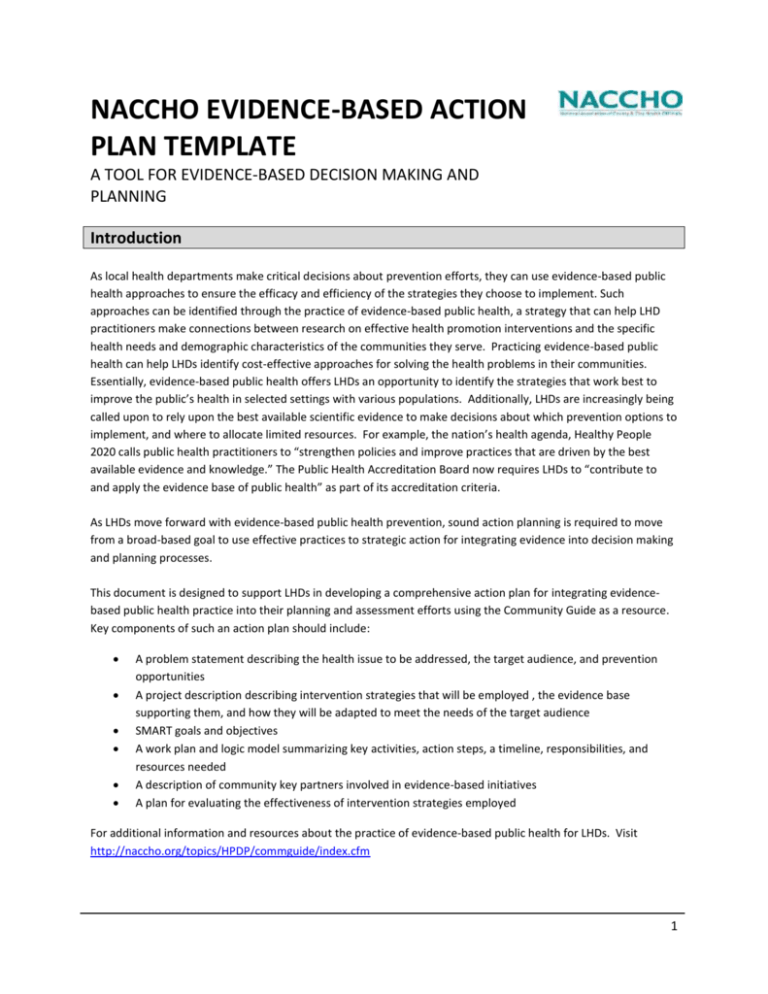
NACCHO EVIDENCE-BASED ACTION PLAN TEMPLATE A TOOL FOR EVIDENCE-BASED DECISION MAKING AND PLANNING Introduction As local health departments make critical decisions about prevention efforts, they can use evidence-based public health approaches to ensure the efficacy and efficiency of the strategies they choose to implement. Such approaches can be identified through the practice of evidence-based public health, a strategy that can help LHD practitioners make connections between research on effective health promotion interventions and the specific health needs and demographic characteristics of the communities they serve. Practicing evidence-based public health can help LHDs identify cost-effective approaches for solving the health problems in their communities. Essentially, evidence-based public health offers LHDs an opportunity to identify the strategies that work best to improve the public’s health in selected settings with various populations. Additionally, LHDs are increasingly being called upon to rely upon the best available scientific evidence to make decisions about which prevention options to implement, and where to allocate limited resources. For example, the nation’s health agenda, Healthy People 2020 calls public health practitioners to “strengthen policies and improve practices that are driven by the best available evidence and knowledge.” The Public Health Accreditation Board now requires LHDs to “contribute to and apply the evidence base of public health” as part of its accreditation criteria. As LHDs move forward with evidence-based public health prevention, sound action planning is required to move from a broad-based goal to use effective practices to strategic action for integrating evidence into decision making and planning processes. This document is designed to support LHDs in developing a comprehensive action plan for integrating evidencebased public health practice into their planning and assessment efforts using the Community Guide as a resource. Key components of such an action plan should include: A problem statement describing the health issue to be addressed, the target audience, and prevention opportunities A project description describing intervention strategies that will be employed , the evidence base supporting them, and how they will be adapted to meet the needs of the target audience SMART goals and objectives A work plan and logic model summarizing key activities, action steps, a timeline, responsibilities, and resources needed A description of community key partners involved in evidence-based initiatives A plan for evaluating the effectiveness of intervention strategies employed For additional information and resources about the practice of evidence-based public health for LHDs. Visit http://naccho.org/topics/HPDP/commguide/index.cfm 1 Instructions Complete the template below to map out your action plan for evidence-based decision making and planning. Please limit responses to each section to no more than 500 words: Problem Statement: Provide a clear and concise description of the primary health concerns in your jurisdiction using primary and/or secondary data from a community health assessment. Include a description of your community’s long-term vision for health, the health problem to be addressed, the target population affected, socioecological determinants compounding the issue, key stakeholders involved, the historical context of the health problem, and opportunities/priorities for prevention. Project Description: Summary of Evidence Reviews Describe the evidence-based recommendation from the Community Guide (or other sources) that you will be using to address the health concern described in your problem statement. Fit Between Evidence and your Project Describe how the recommendation will effectively address your health problem and cite data supporting the effectiveness of the strategy. Adaptation of the Evidence Summarize the relevance of the intervention to your target audience, and how you will adapt the strategy to make it fit your community’s needs. Describe the SMART goals and objectives you wish to achieve by implementing the strategy. Include a logic model to show the logical progression of steps that will take you from your broad goals to action that results in your desired outcomes. State key activities that will be implemented to achieve your desired outcomes, who will be responsible for implementing them, a timeline, and resources needed to carry out your work plan. Provide a description of how you will engage multi-sector partners in your evidencebased prevention and planning efforts and at what stages. Define key partners involved, their roles, and responsibilities. Describe how collaboration with each partner strengthens the project, and why they are best suited to help you carry out your project. Describe the evaluation methods you will employ to measure whether the project goals, objectives, and outcomes have been achieved and if the project is being implemented as intended. Include an evaluation plan that describes data collection methods, indicators, analysis, and reporting methods. Project Work Plan: Collaboration: Evaluation: 2
